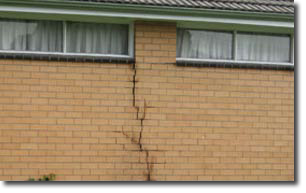Ground slabs - Introduction
Concrete slabs are similar to beams in the way they span horizontally between supports and may be simply supported, continuously supported or cantilevered.
Unlike beams, slabs are relatively thin structural members which are normally used as floors and occasionally as roof systems in multi-storey buildings.
Slabs are constructed of reinforced concrete poured into formworkFormwork is the temporary framework into which concrete is poured to create a structure. The formwork defines the shape of the final slab when the concrete is cured (set). It is usually timber but steel is commonly used on commercial projects. on-site or into trenches excavated into the ground. Concrete slabs are usually 150 to 300 mm deep.
Slabs transmit the applied floor or roof loads to their supports. Slabs may be classified into two main groups depending on whether they are supported on the ground or suspended in a building.
Ground slabs
Ground slabs are those slabs that are poured directly into excavated trenches in the ground. They rely entirely on the existing ground for support. The ground (more correctly known in the industry as the foundation) must be strong enough to support the concrete slab. In a residential situation the BCAThe BCA is the Building Code of Australia which is a set of building regulations for all of Australia. prescribes a minimum bearing capacity of 50 kPa for slab sites.
Need more information about units of force?

In most cases, the foundation easily meets this minimum bearing requirement. However, where clays and silts are present in the soil, the slab may experience stresses. These soils tend to be on reactive sites which are those areas where the volume of soil changes because of its moisture content. This results in the foundation expanding or contracting depending on how much moisture the soil contains.
Foundation movements can be significant enough to damage a slab and any other components it supports, such as the brickwork shown in the photo.

